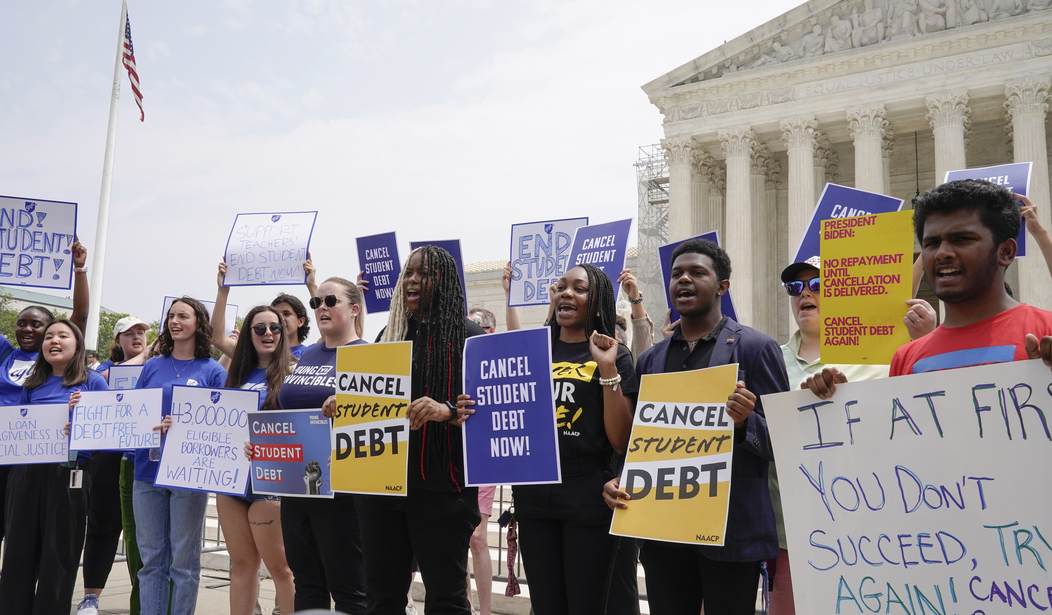My son and I share the same middle name of Marcus, but my folks always called me "Mark," so that's why you see the four-letter name in my byline.
The following column, however, was written by Marcus, following a conversation we had recently in which he made what struck me as an extremely impressive case for the proposition that America's elite universities should be cut off the federal teat and forced to start relying on their $880 billion cumulative endowments.
What do you think? If you are of a certain age, you will recall the days of the "M & M Boys," Mickey Mantle and Roger Maris. After reading this piece by Marcus, I am wondering if we shouldn't start doing a joint column under that moniker!
So, take it away, Marcus:
Much has been made lately about the accessibility of the American dream for many younger Americans, particularly for Gen Z and younger Millennials.
With the National Debt now approaching $34 trillion, U.S. inflation rates still well above the Fed’s target rate of 2%, home prices reaching record highs, and student loan debt climbing over $1.73 trillion cumulatively, many are rightfully asking whether the American Dream is dying, and what if anything can be done to preserve it.
If you spend much time on TikTok, Instagram, or X (formerly Twitter) you’ll see many 20 and 30-something Americans pointing out how difficult it is for them to afford day-to-day essentials, rent, car payments, and student loans.
Predictably, these folks view foundational elements of the American dream like home ownership and having children as luxuries that are simply out of reach.
Many of these college-educated folks are rightfully asking how we got here. Considering they made the “right” choices in attending prestigious universities, and in many cases attained four-year degrees in hard sciences, business, and other pursuits with lucrative salaries nearly guaranteed, it’s hard to argue against their outrage at their plight.
These Americans are not hopeful about the future, nor do they feel like they are getting ahead. Rather, they are angry that they are not able to attain the lifestyle that their parents provided for them.
A popular topic often called out as a driver of this decline is the cost of higher education. And it’s no secret that the cost of college education has risen dramatically since the federal government began guaranteeing student loans in 1965 (roughly $3,400 per year then, adjusted for inflation, versus the $10,662 for in-state tuition at state schools and $42,162 for private schools today.)
It should surprise nobody on the political left or right that many younger Americans are calling for a bailout of student debt. And while there may be merit to the complaints about degree inflation and tuition costs, few would argue the moral and ethical implications of asking a 50-year-old welder who chose not to attend college to pay for someone who did.
The question that I only recently have begun to see asked is what responsibility the institutions themselves have in our current financial mess.
Clearly, the massive expansion of degree programs for jobs that previously didn’t require degrees has surely impacted many students who must now attend a four-year school. Moreover, colleges and universities around the country have dramatically ramped up student amenities and services and faculty and administrative salaries, and they have created an entire industry around Diversity/Equity/Inclusion (DEI) initiatives that didn’t exist until very recently.
Ask any college graduate older than 40 about their college experience vs. college today, and you’ll consistently hear that today’s university experience is more like a 4-year vacation resort than what anyone experienced even 10 or 15 years ago.
Related: Biden Emails 800K Student Loan Borrowers to Brag About Forgiving Their Debt
Predictably, the cost of all of this is driving an arms race in tuition escalation around the country with no end in sight. It’s a race being driven by college and university administrators, federal education bureaucrats, and politicians in both political parties.
When we consider what a federal bailout will incentivize, we should not expect a scaling back of university spending. It is far more reasonable to expect them to lean in harder and spend even more, since a bailout would establish that everyone has to pay for student debt irrespective of whether they have attended college.
And yet, when we look at the university endowments around the country, we see that they are sitting on more money than ever before. In fact, as of 2023, the cumulative total of university endowments is over $810 billion. Let that sink in for a moment.
Lawmakers are arguing about how much the federal government will pay and who will be eligible for these bailouts — when a full 47% of the total debt is sitting in the coffers of the universities that set the tuition rates. And nobody has even asked about it?
Now, we can have a reasonable debate about how endowments are spent, and to whom any bailout is due. Frankly, any time the federal government concerns itself in these matters, there will always be winners and losers. But before we ask ALL taxpayers who are already on the hook for nearly $34 trillion of federal debt to take on one more penny, shouldn’t we be asking something from the universities?
There are certainly legal experts who can determine how much of these funds can reasonably be targeted for any type of bailout. But the promise of future funding to these institutions must be leveraged for some commitment to reducing tuition and providing aid to current and future students, and some relief to borrowers.










